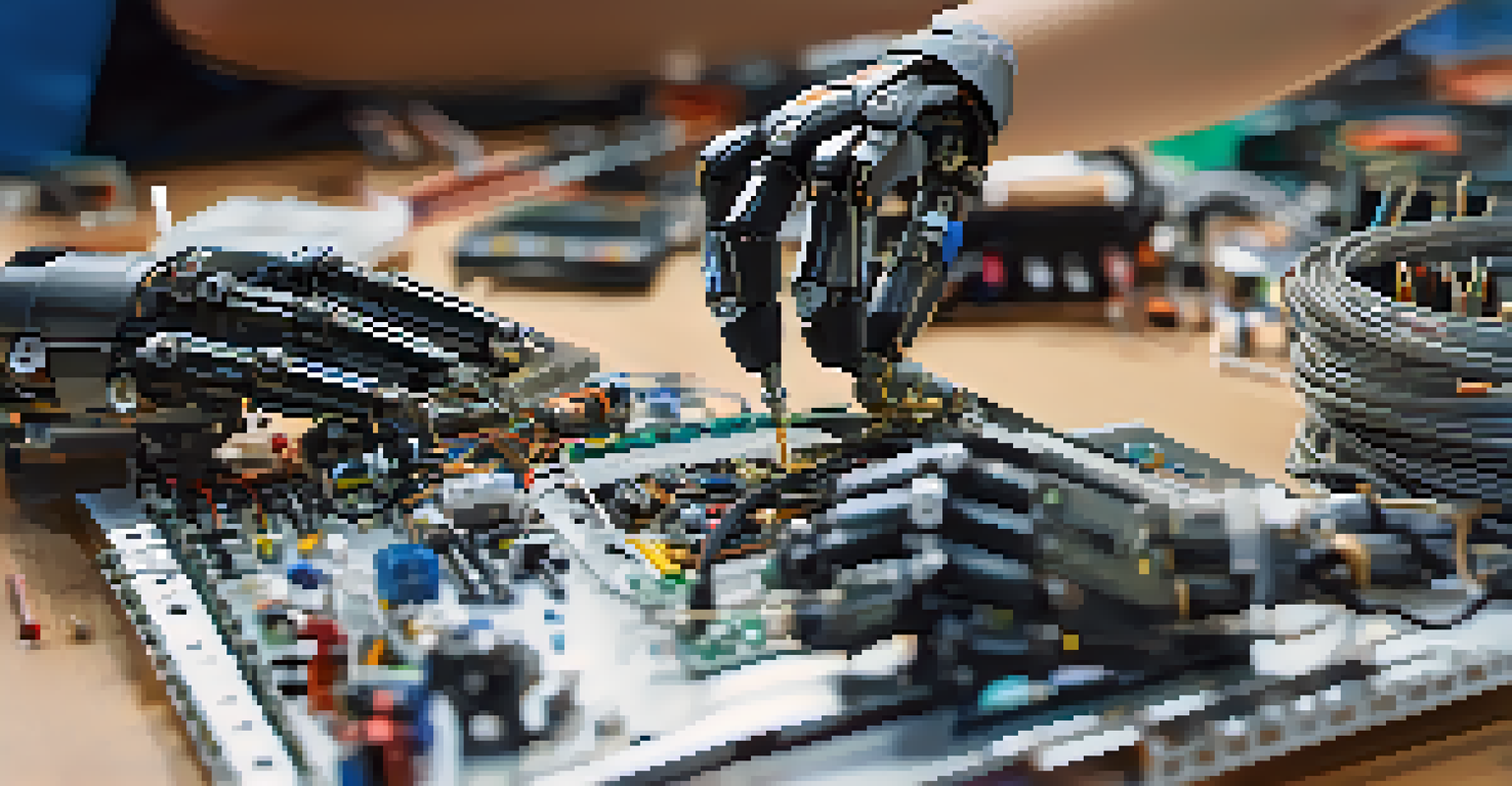Why STEAM Education is Essential for Modern Learners

Understanding STEAM: What Does It Mean?
STEAM stands for Science, Technology, Engineering, Arts, and Mathematics. This interdisciplinary approach integrates these fields to create a well-rounded educational experience. By blending creativity with analytical skills, STEAM encourages students to think critically and solve complex problems.
Creativity is thinking up new things. Innovation is doing new things.
Unlike traditional education that often separates subjects, STEAM emphasizes the connections between them. For instance, a project that involves building a robot requires knowledge of engineering, programming, and artistic design. This holistic view prepares students for real-world challenges where interdisciplinary skills are essential.
Ultimately, embracing STEAM education means equipping learners with a diverse skill set that goes beyond rote memorization. It's about fostering innovation and adaptability, traits that are increasingly valuable in today’s fast-paced world.
Fostering Creativity Through STEAM Education
One of the most significant benefits of STEAM is its ability to nurture creativity. In a world where automation is on the rise, creative thinkers are more important than ever. STEAM education encourages students to explore their imaginations while applying scientific principles, leading to innovative solutions.

For example, when students are tasked with designing a sustainable garden, they must consider environmental science, engineering for structure, and artistic design for aesthetics. This kind of project allows students to express themselves creatively while applying knowledge from various disciplines.
STEAM Integrates Learning Fields
STEAM education blends science, technology, engineering, arts, and mathematics to foster a holistic learning experience.
By promoting creativity, STEAM prepares learners to approach problems from unique angles. This skill is invaluable, as many future jobs will require innovative thinking and the ability to adapt to changing circumstances.
Building Problem-Solving Skills in Learners
STEAM education is inherently problem-based, encouraging students to tackle real-world challenges. This hands-on approach helps learners develop critical thinking and analytical skills. When students engage in projects that require them to identify problems and devise solutions, they learn to think independently and collaboratively.
The future belongs to those who believe in the beauty of their dreams.
For instance, a project that involves designing a bridge requires students to calculate load limits, consider materials, and test their designs. This not only reinforces mathematical concepts but also strengthens their ability to troubleshoot and iterate on their ideas.
As students encounter obstacles during their projects, they learn resilience and adaptability. These are essential qualities not just for academic success, but for navigating life’s challenges beyond the classroom.
Enhancing Collaboration and Communication Skills
Another vital aspect of STEAM education is its emphasis on collaboration. Many projects require students to work in teams, fostering communication and teamwork skills. In today’s interconnected world, the ability to collaborate effectively is a key component of success.
When students work together on a STEAM project, they learn to share ideas, divide tasks, and respect different viewpoints. For example, in a group tasked with creating a multimedia presentation, each member must contribute their unique skills while ensuring the final product is cohesive.
Creativity Drives Future Skills
By nurturing creativity through interdisciplinary projects, STEAM prepares students for innovative thinking and problem-solving in future careers.
These collaborative experiences help students develop interpersonal skills that are crucial in both academic settings and the workplace. The ability to communicate clearly and work well with others is something every modern learner should master.
Preparing Learners for Future Job Markets
The job landscape is evolving, with many roles requiring a combination of technical and creative skills. STEAM education prepares students for these future careers by equipping them with relevant knowledge and competencies. Employers increasingly seek candidates who can think critically and innovate, making STEAM an invaluable educational framework.
For instance, fields like data science, robotics, and digital design all benefit from a strong foundation in STEAM. Students who engage in these subjects are more likely to find themselves in high-demand positions upon graduation.
By integrating STEAM into education, we are not just preparing students for their first job; we are preparing them for lifelong learning and adaptability in a constantly changing job market.
Cultivating a Growth Mindset in Students
STEAM education naturally fosters a growth mindset, encouraging learners to see challenges as opportunities for growth. This mindset is crucial in today’s educational landscape, where resilience and adaptability are key to success. Students are taught that it's okay to fail—it’s part of the learning process.
For example, when students work on a robotics project, they may encounter setbacks in their designs. Instead of giving up, they learn to analyze what went wrong and make adjustments. This iterative process not only deepens their understanding but also builds confidence in their ability to tackle future challenges.
Real-World Relevance Engages Students
Connecting learning to real-world issues enhances student engagement and fosters a sense of responsibility toward societal challenges.
Encouraging a growth mindset through STEAM helps students develop perseverance, preparing them to face obstacles not just in school, but throughout their lives.
Integrating Real-World Relevance in Learning
One of the standout features of STEAM education is its connection to real-world applications. When students can see how their learning relates to everyday life, they are more engaged and motivated. Projects that address current societal issues, like climate change or healthcare innovation, make learning feel relevant and urgent.
For instance, a project on renewable energy not only teaches students about physics and engineering but also helps them understand its importance in combating climate change. This relevance not only sparks interest but also instills a sense of responsibility.

By integrating real-world relevance into lessons, STEAM education empowers students to become informed citizens who are capable of making a positive impact in their communities.
Conclusion: The Future of Education is STEAM
In conclusion, STEAM education is essential for modern learners, as it cultivates creativity, critical thinking, collaboration, and adaptability. These skills are crucial in navigating the complexities of today’s world and preparing for an uncertain future. As we continue to evolve as a society, the integration of STEAM in education will play a pivotal role in shaping the innovators and problem solvers of tomorrow.
Furthermore, by fostering a love for learning and encouraging a growth mindset, STEAM not only prepares students for careers but also for life. It highlights the importance of interdisciplinary approaches and the relevance of education in addressing real-world challenges.
As we advocate for STEAM education, let’s embrace its potential to transform learning experiences and equip future generations with the tools they need to thrive.